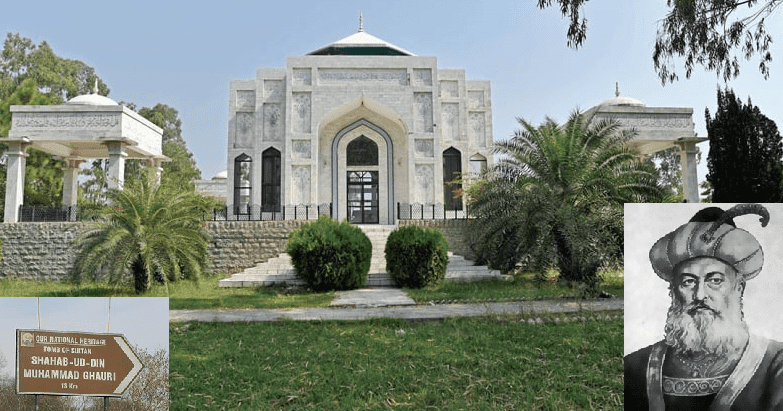Aurangzeb literally means “one who beautifies the crown(Taj)“. Aurangzeb was born on 3 November 1618 AD in Dahod (Gujarat) near Ujjain (Madhya Pradesh). Its original name was Muhi-ud-din-Muhammad. He ruled in India for 49 years and was the sixth Mughal ruler to rule India. Its mother’s name was “Mumtaz” but it was raised by Nur Jahan, the second wife of his father “Shah Jahan” and his guru’s names were “Mir Hashim Geelani” and “Abdul Latif Sultanpuri” and Mir Masoom of the resonant “Naqshbandi” ” Were.
Title / Surname:
- Bahadur: The title given to him by his father at the age of 15, due to his father “Shah Jahan” controlling the elephants named Sundara and Sudhakar.
- A dervish in royal attire: Aurangzeb’s way of living was simple (as he did not drink liquor, as well as had a complete ban on liquor during his reign, did not wear any ghat of gold / pearls etc. )
- Jinda Pir: Safely following the laws of Islam
- Hafiz: The only or last emperor whom the Quran memorized.
- Alamgir: He addressed himself to this title during his first coronation (AD 1658).
- Emperor Ghazi: The title taken during the second coronation (AD 1659).
Padding State:
The Chagatai tradition was broken (according to its tradition, you cannot be crowned until the father “Shah Jahan” died. His father was alive, who was imprisoned in a closed dark room.). Because of this, the Qajis refused to keep the crown at the time of the Delhi coronation, only one Kazi’s name was “Qazi Abdul Wahab Gujrati“. It supported Aurangzeb and issued fatwas and crowned and became the chief qazi. Later Qazi Abdul Wahab transgresses the rules made by Gujrati Aurangzeb (such as private trade, who had also drunk liquor by theft), due to which Aurangzeb withdrew from it and was expelled from Agra. It has been seen against Aurangzeb during a campaign “Golconda Campaign”.
Main Work :
- As soon as he became the ruler, he removed 80 types of Shariat (meaning Islamic tax). Such as octroi sharia, food grain sharia, pilgrimage sharia, fair sharia etc.
- Slave trade, drinking, gambling, prostitution, cannabis cultivation, banning of sterilization of children at an early age, stopping and ending the Persian and Navroz festival.
- Manufacturing of Kalma was stopped on coin(mudras), in its place a poem of the poet “Mir Abdul Shehbai” was written and it stopped the poems of the Persian poet Hafiz.
- Prohibition of cosmetics related to makeup, such as the beard does not exceed four fingers.
- Created a special post of a Mohitisab (Inspector of Religion) in every province who could not interfere in the private lives of the citizens, probably the first Mohitisab was “Mulla Ojwazih”.
- The term Jabawat-e-Alamgiri was created to compile the Government Rules Act, as well as a collection of Islamic law called “Fatwa-e-Alamgiri”. Its collection was being headed by Sheikh Nizam and his six colleagues.
- It changed the year of his reign and the revenue year “Surya Panchang” to “Chandra Panchang”.
- Akhbaraat (Royal Information Paper) was out of reach of the public.
Aurangzeb’s Religious Policy:
- 1663: Taxed pilgrimage as well as ban on sati practice.
- 1665: Differentiated into the field of trade. Within which there was a provision to levy tax of 2.5% from Muslims and 5% from Hindus.
- 1669: Ban on singing (used to play Veena on the occasion of extreme happiness), Jharokha darshan ended. And the Muharram festival stopped.
- 1670: Birthday celebrations stopped, Tuladan system stopped (later exempted due to social pressure)
- Ban on burning on Thursday night at Piro’s tomb
- Steps of saving – History writing department closed, courtiers ban on wearing silk clothes
Ruined Temples:
- Somnath Temple of Gujarat
- Keshavaraya Temple of Mathura
- Vishwanath( Temple of Banaras)
- Jaipur Temple
Jaziya(Tax)
Jaziya (tax collected from non-Muslims) was started by Aurangzeb in the 22nd year of his reign. It first imposed tax in Marwar and also declared the region as Dar-ul-Herb (area of infidels).
- The king of Mewar gave Aurangzeb three districts (Mandal, Vednaur, Adalpur) in lieu of Jaziya.
- Sister Jahanara Begum opposed Jaziya.
Jaziya was divided into three categories –
- First class – 48 dirhams (12 rupees)
- Second class – 24 dirhams (6 rupees)
- Third class – 12 dirhams (3 rupees)
Reason for applying Jizia:
Historian Ishwar Das and Saqi Mustaid said that Aurangzeb wanted to exploit Hindus by putting a jiziya. Whereas historian Yadunath, Khafi Khan, Mamuri states that Aurangzeb wanted to make “Dar-ul-Herb” “Dar-ul-Islam”. The same historian Manuchi says that he wanted to fill the vacant treasury by imposing taxes.
Exception format:
So far we have seen the fundamentalist life of Aurangzeb, but you can be surprised to know the real face of Aurangzeb.
- Aurangzeb, the element of Hindu Bairagi Shivamangala Das Maharaj, used to listen to the discourse of Mimansha.
- Jazia of Hyderabad pardoned for one year and Jajia pardoned for the entire decade due to famine in 1704.
- Abundant revenue-free land grants at all the places given below:
- Panth Bharti (Sivan of Rajasthan)
- Ujjain (Mahakal Temple)
- Gurudwara of dehradun
- Prayagraj Temples
Revolt during Aurangzeb’s period:
1) Jat rebellion in Mathura
- Gokul – killed the Subedar of Mathura, Abdunbi because he had built a mosque deposited in Mathura.
- Rajaram: Dug up Akbar’s grave at Sikandra and burnt it to the bone, defeating Mughal commander Yugir Khan.
- Chudaman – sent Kishanwah Bishan Singh of Amer (present-day Jaipur) to defeat it. Bishan Singh won the fort of Sonar by defeating Rajaram and Chudaman. Chudaman established the Bharatpur state near Mathura. It is considered the founder of the Jat kingdom. It committed suicide in 1712.
- Badansingh: It was given the title of King by Ahmad Shah Abdali and added Mahendra in front of its name. And Raja Jaisingh of Jaipur gave the title of Brajraj. Badansingh built the boast fort at Bharatpur, the capital of Bharatpur.
- Surajmal: It is called Aflatoon of Jats or Ulysses of Jats. It remained neutral in the third war of Panipat, built palaces like Agra in boast, built the fort of Lohgarh. English commander General Lake won brag but could not win Lohgarh.
2) Sikh rebellion:
The Sikh Guru was Harai at the time of Aurangzeb’s rule. Aurangzeb hangs the Tegh Bahadur, the ninth Guru of the Sikhs, and chooses both the children of Guru Govind Singh alive in the wall.
3) Satnami Rebellion:
- They were Bairagipantis, it was basically a peasant revolt. Narnaul was the center of this rebellion. Raja Bishan Singh suppressed this war.
- Mustaid Khan compared this war to the Mahabharata.
4) Shahjaha Akbar’s rebellion:
He was the son of Aurangzeb who was against the rules made by his father. When Aurangzeb was in Amer, Akbar proclaimed himself king on 11 January 1681, joining Durgadas Rathore and Sisodia Rajput. Aurangzeb called Akbar “a distraught of India”.



